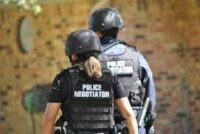Autism Seizures
Autism, Puberty, and the Possibility of Seizures credit: Center for the Study of Autism
Seizure Disorders and Landau-Kleffner Syndrome in the Autistic Population:
A Review of Seizure Disorders and Landau-Kleffner Syndrome in the Autistic Population: reprinted by kind permission Joanna S. Dalldorf, M.D. Developmental Pediatrician.
Seizure Disorders and Landau-Kleffner Syndrome in the Autistic Population:
Section Index:
- Definit and Frequency of Epilepsy in Autistic Population
- Clinical Observations.
- Diagnostic Studies
- Seizure Treatment
- Landu-Kleffner Syndrome
1. Definition and Frequency of Epilepsy in Autistic Population.
Epilepsy is a chronic disorder of the brain characterized by recurrent seizures, as opposed to seizures occurring in association with high fever, drug effects, chemical imbalance (e.g., low blood sugar). Epilepsy can occur without other evidence of neurologic dysfunction, but it is often associated with more global neurologic abnormalities, such as autism, cerebral palsy, or mental retardation. The majority of autistic persons do not have seizures. However, they are at higher risk for seizures if they have certain specific neurologic conditions, such as tuberous sclerosis, neurofibromatosis, untreated phenylketonuria. Infantile spasms (sudden generalized muscle contractions, usually beginning between ages 3 and 8 months) do occur in association with autism, often in young children who have tuberous sclerosis or other significant neurologic problems. Other forms of epilepsy–complex partial epilepsy, generalized tonic-clonic epilepsy and, more rarely, absence seizures–also may occur in autistic children. The frequency of epilepsy in autistic children is below 15% (my estimate) and, if seizures do occur, they are more likely to occur in the autistic child who is also mentally retarded. There is an increased incidence of seizures in otherwise seizure-free autistic persons when they become adolescents. Roughly 25-30% of autistic adolescents have been reported to develop seizures, although such a high incidence has not been noted by me. It is of note that the seizures are usually not serious, are usually controlled by anticonvulsants, and are inclined to diminish in adulthood. The reason for this significant increased frequency of seizures in autistic adolescents is unknown and may represent, at least in part, the general tendency for seizure disorders to become more problematic at puberty. Top of Page2.Clinical Observations
There are many autistic persons who have behavior and mannerisms, e.g., swaying, sudden repetitive movements, which may raise questions about a seizure disorder. This is a valid concern because seizures can reduce one’s awareness of the environment and/or create anxiety and thus enhance autistic behavior and communication problems. How can seizures be distinguished from unusual behaviors?- 1. Seizures are sudden and without provoking events. If an autistic person’s suspected “seizures” are clearly the consequence of anger, frustration, fear, these episodes are probably not seizures. (On occasion, seizures are provoked by certain light frequencies or sounds. Seizures can also be brought on by prolonged hyperventilation in a person susceptible to seizures.)
- 2. Seizures generally follow a similar -pattern each time, although some seizures might be more intense and prolonged than others. If the autistic person’s “seizures” are varied in movements and mannerisms, these events are probably not seizures.
- 3. Generalized seizures are often associated with an aura (perhaps a sense of fear or odd sensations) and may be followed by a headache, weakness or exhaustion. If the autistic person has had a major “seizure,” it is unlikely he would immediately resume his regular activity.
- 4. Absence attacks, often suggested by the autistic person’s staring mannerisms, involve brief (less than 10 seconds unless frequent episodes) loss of consciousness, often with some eyeblinking or mild facial movements. Complex partial seizures, which can also involve staring, are also often associated with some associated movements, lip-smacking, shuddering. If an autistic person has frequent staring episodes, it is important to determine if there is any response to environmental stimuli and whether there are any associated movements.


